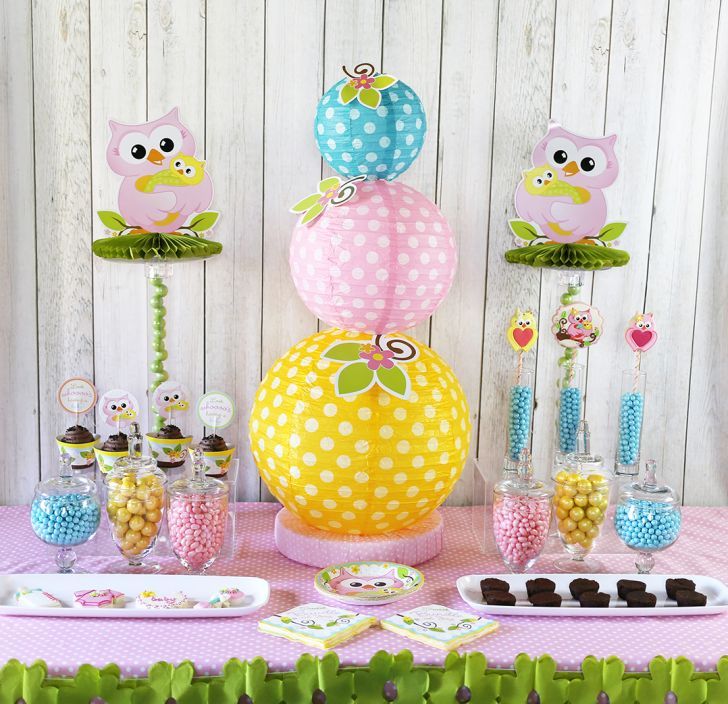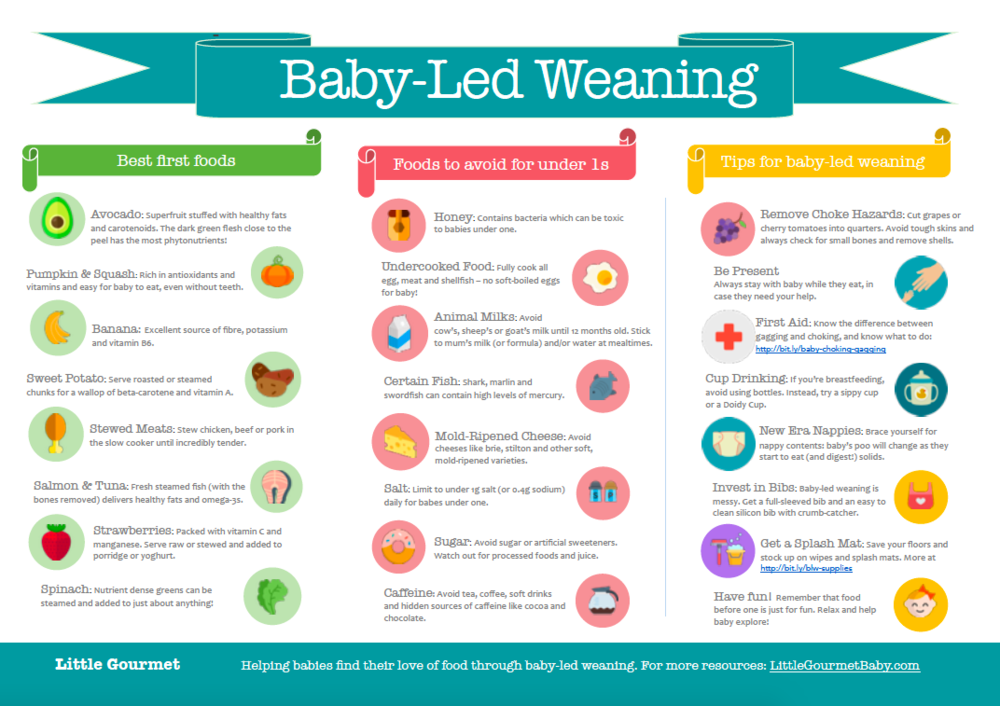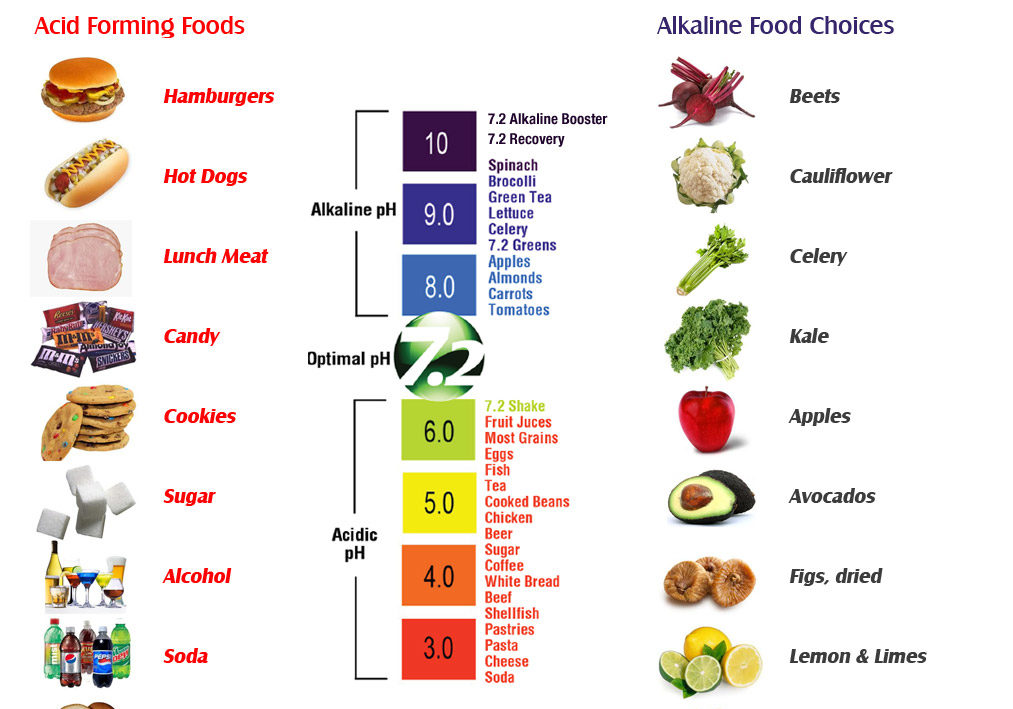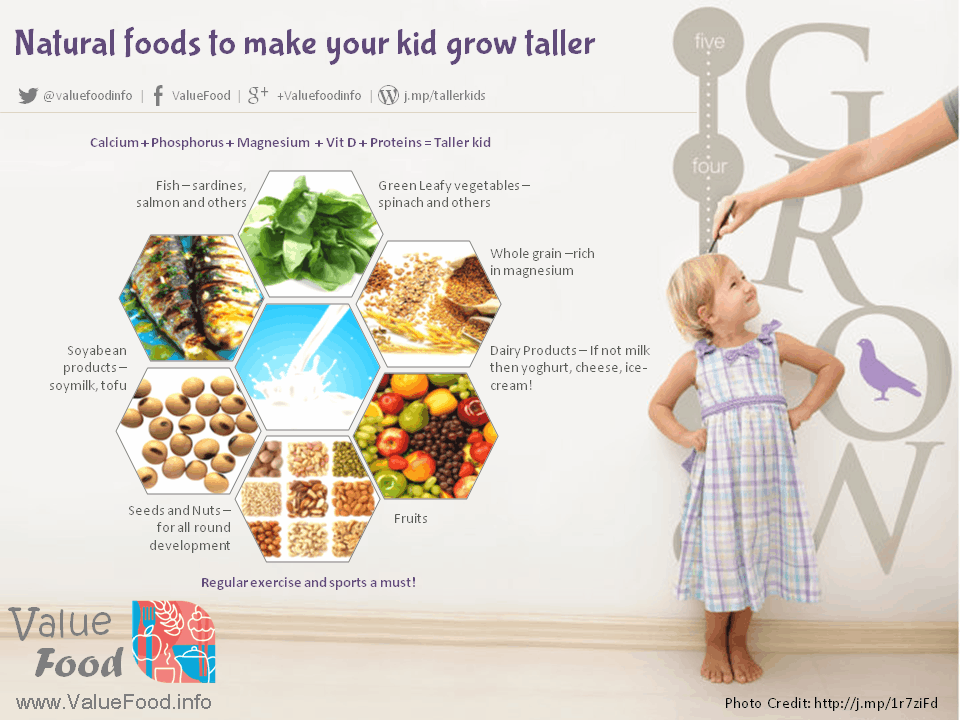How often should i feed baby rice cereal
When Can You Start Feeding Your Baby Rice Cereal
Adding solid foods to your baby’s diet is a big milestone, and you may be wondering when to begin the process and what foods to start with. In the past, single grain infant cereals have been the traditional first choice when transitioning to solid foods, with rice cereal being one of the more popular ones. These days, though it is still OK to start with cereal, experts say that there is no evidence that introducing foods in a certain order provides any advantage for your baby (though babies do tend to like cereal).
Keep in mind that experts highly recommend giving rice cereal as part of a mixed diet of single ingredient choices, rather than as an exclusive food.
Find out how to safely give rice cereal to your baby, and what other infant cereals you might want to give instead.
What Is Rice Cereal?
Rice cereal for babies has been a traditional first food for infants who are being introduced to eating solids. The most common type is a dry powdered cereal, to which liquid is added to form an oatmeal-like consistency, but it can also be purchased premixed. It's one of the single grain cereals that have been recommended for infants when they start on solid foods.
Is Rice Cereal Safe for Your Baby to Eat?
It’s OK to include rice cereal in your baby’s diet as long as you’re not exclusively feeding your baby rice cereal.
The reason experts recommend rice cereal be limited is because of the naturally occurring levels of inorganic arsenic in rice (in this case inorganic refers to the arsenic’s specific chemical compound bound with carbon).
As rice is grown, the plant absorbs more inorganic arsenic from its environment compared to other crops. Arsenic is a naturally occurring element that can enter the food supply through water, soil, or air.
When body weight is considered, a baby’s intake of inorganic arsenic through rice cereal could be three times more than an adult’s. Eating too much rice cereal as an infant can cause long-term health problems.
Eating too much rice cereal as an infant can cause long-term health problems.
What Infant Cereals Can You Give Your Baby Instead of Rice Cereal?
Instead of rice cereal, you can offer another single grain infant cereal such as oat or barley cereal. You can find many of these infant cereals in premixed or dry versions to which you would add breast milk, formula, or water to create a consistency that your baby will like.
Look for cereals that are specifically made for babies because they will be fortified with nutrients like iron and zinc that your baby needs.
Just remember that when introducing new foods — including different types of infant cereals — do so gradually, offering one new food at a time, and then waiting a couple of days before adding another food, to watch for any possible allergic reactions. Once your baby has become accustomed to eating solids, feel free to offer a variety of single ingredient, soft foods.
How Many Times a Day Should You Feed Your Baby Infant Cereal?
When your little one is just starting on solids, spoon-feed your baby a small amount of infant cereal once or twice a day, ideally just after he’s been bottle-fed or breastfed. Start with one or two teaspoons of cereal so that your baby can get accustomed to this new food.
Eventually you can introduce other foods one at a time—and you can even make your baby’s food at home.
Are Other Rice Products Safe to Give Your Baby?
Not necessarily. You can give rice to your older baby as part of a varied and balanced diet. However, it’s best to avoid certain rice-based products like rice syrup, often used as a sweetener in processed foods, as well as rice milk, which should not be used as a substitute for cow's milk.
If your child has turned 1 and is sensitive or allergic to cow’s milk, your healthcare provider will be able to recommend milk alternatives if needed, and can also weigh in on any rice products you’re considering giving.
At What Age Should You Start Feeding Your Baby Infant Cereals?
For most babies, 6 months is a good age to start to introduce solid foods, which can include infant cereals. Breast milk or formula will continue to provide most of your baby's nutrition for the first 12 months.
Waiting until this age is important because by this point your baby would have outgrown a natural reflex that all babies are born with that causes them to push their tongue against anything inserted into their mouths. Most babies grow out of this tongue thrust reflex between 4 and 5 months.
Can You Give a Baby Younger Than 6 Months Infant Cereals?
Most babies are not ready for solid foods, including infant cereals, until they are about 6 months old, though some babies could be ready a month or two earlier. Experts recommend that babies be breastfed or bottle-fed (with expressed breast milk or formula until 6 months of age.
How Do You Prepare Dry Infant Cereal for Your Baby?
If you’re using dry cereal, mix one tablespoon of dry cereal with four tablespoons of breast milk, formula, or water; or follow the recommended directions on the container.
Be sure not serve the cereal from a bottle for reasons we mention in the next section. Gradually, you can add less liquid to the dry cereal to find a thickness your baby likes.
Can You Feed Your Baby Cereal in a Bottle?
Although this might be a practice you’ve heard of, don't feed your baby cereal in a bottle unless your baby’s healthcare provider says otherwise. Feeding your baby through a bottle can lead to unnecessary calories—she may consume more food than she actually needs.
Although rice cereal may have been a popular choice, experts now say there are other infant cereals and first foods that may be safer for your baby. If you’re ever unsure about which infant cereal to give, or need advice about expanding your baby's menu, reach out to your baby’s healthcare provider for advice.
If you’re ever unsure about which infant cereal to give, or need advice about expanding your baby's menu, reach out to your baby’s healthcare provider for advice.
As your baby transitions to solid foods, you deserve lots of rewards for all those diaper changes. Download the Pampers Club app to get rewards for all your Pampers purchases.
How we wrote this article The information in this article is based on the expert advice found in trusted medical and government sources, such as the American Academy of Pediatrics and the American College of Obstetricians and Gynecologists. You can find a full list of sources used for this article below. The content on this page should not replace professional medical advice. Always consult medical professionals for full diagnosis and treatment.
When Can You Start Feeding a Baby Rice Cereal? Safety and More
If you ask for advice on the best time to start feeding your baby rice cereal, the responses may be all over the place.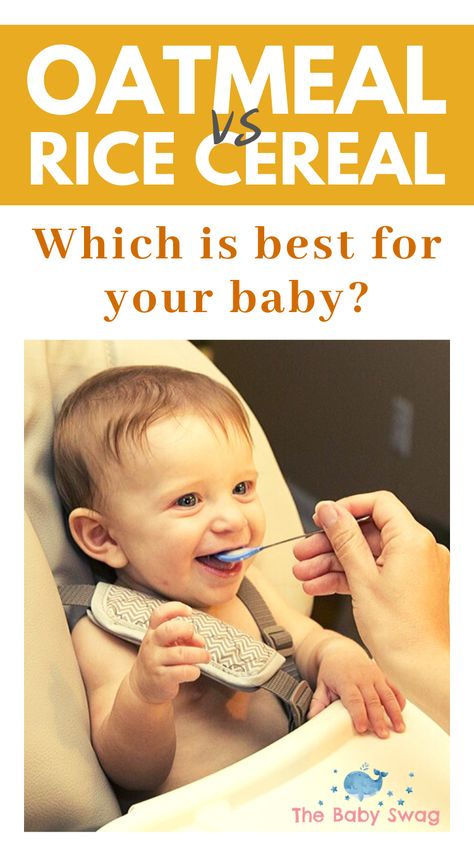 Some people might suggest feeding a baby rice cereal starting at 6 months, whereas others might suggest as young as only 2 or 3 months old.
Some people might suggest feeding a baby rice cereal starting at 6 months, whereas others might suggest as young as only 2 or 3 months old.
But just because someone else gives their baby rice cereal early doesn’t mean that you should do the same. For advice, the best place to go is to your own pediatrician — they’re the authority on your baby’s health. In the meantime, here’s what other experts recommend.
Updated recommendations
New guidelines caution that rice cereal shouldn’t be the only solid given. So the old practice of starting only iron-fortified rice cereal at about 6 months is no longer recommended.
For the first few months of life, you’ll feed your baby exclusively with breast milk or formula. Anything other than breast milk or formula is considered a solid food. So when deciding the right time to start your baby on rice cereal, you should follow the same guidelines for starting a baby on solid foods.
Some people argue that rice cereal is an exception to the guidelines — perhaps because of the ability of rice cereal to dissolve in (and “thicken”) breast milk or formula when added in small quantities.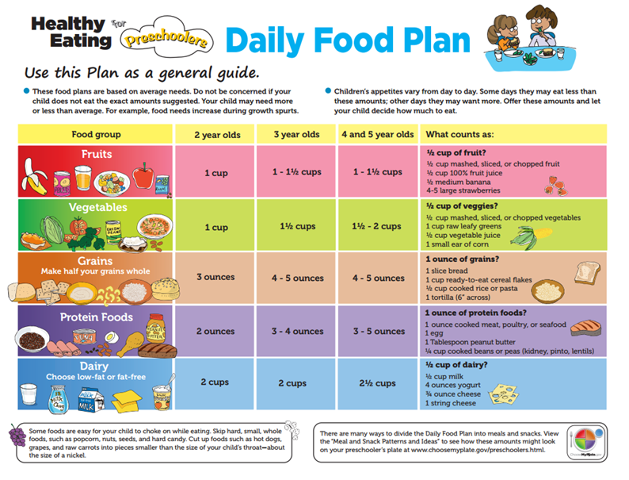
Yet, rice cereal is a solid food. Babies aren’t ready for solid foods until they’re about 6 months old.
Since every baby is different, it’s important to look for signs that your baby is actually ready to start eating rice cereal before serving it.
You should hold off feeding a baby solid food until they have control of their neck and head. Your little one will need to be upright while eating, so they should be able to sit in a highchair.
Most importantly, don’t give a baby rice cereal until they have the oral skills to move solid food from the front of their mouth to the back. This skill doesn’t typically develop until at least 4 months old. Until then, your baby’s tongue will push out any food that enters their mouth.
Another telltale sign that your baby may be ready for solid food is when they express an interest in your food. If you’re eating in their presence, they might try to grab your food — or lean in toward food with their open mouth (have your camera ready!).
For the most part, you shouldn’t give a baby rice cereal before the recommended guidelines. Even though the extrusion reflex — that automatic reflex that causes a baby’s tongue to push food forward — can provide some protection before they’re ready, offering solid food too early can still pose a choking or aspiration risk.
Giving a baby rice cereal — or other solid foods — too early may also increase a baby’s risk of having obesity.
But when they’re ready, rice cereal can be a great starter food, among others.
After several months of only consuming breast milk or formula, some babies have difficulty adjusting to solid foods.
To start the introduction process, mix 1 to 2 tablespoons of iron-fortified rice cereal with 4 to 6 tablespoons of formula, breast milk, or water. Some people mix rice cereal with fruit juice, too. But this isn’t recommended because fruit juice doesn’t offer health benefits and is very high in sugar.
Spoon feed an iron-fortified rice cereal to your baby. (It’s important that babies get enough iron once they start solid foods.) But don’t be surprised if it takes a couple of feedings for your baby to get the hang of eating this way. You can nurse or bottle feed first, and then end feedings with rice cereal.
(It’s important that babies get enough iron once they start solid foods.) But don’t be surprised if it takes a couple of feedings for your baby to get the hang of eating this way. You can nurse or bottle feed first, and then end feedings with rice cereal.
Doctors used to recommend rice cereal as a “first food.” But now we know that age-appropriate foods can be introduced in any order, and rice cereal shouldn’t be the only solid given for very long due to arsenic exposure, according to the Food and Drug Administration.
You can introduce other jar or puréed foods like fruits and vegetables before or after you introduce rice cereal. And do include other iron-fortified, single-grain cereals besides rice. Variety is the spice of life — even for baby!
When introducing new solid foods to your baby, do so one at a time. This way, you can detect any potential food allergies or sensitivities early. For example, after you feed your baby peas for the first time, wait 3 to 5 days before introducing carrots.
You might have heard of adding rice cereal to a bottle to thicken breast milk or formula. This, however, isn’t recommended unless your pediatrician says it’s OK.
If your baby has episodes of acid reflux, your doctor might advise this method to thicken the milk and try to prevent regurgitation. But this is rare.
Starting a baby on solid food is a major milestone, but you shouldn’t introduce rice cereal too early. Doing so poses a few different risks. So wait until your baby is about 6 months, and look specifically for signs that they’re ready for solids.
When in doubt, talk it out — with your pediatrician. They’re a goldmine of information, and best of all, they know your baby’s health better than anyone else, including Dr. Google.
how to cook rice for feeding
Contents: Hide
One of the first "adult" dishes on the baby's table is rice. This cereal has earned the trust of nutritionists, pediatricians and parents around the world. Rice is a gluten-free, low-allergenic cereal with a high content of "healthy" carbohydrates (up to 85%), which are perfectly digested in the baby's sensitive digestive tract. Rice is also traditionally used in the therapeutic diets of people with diseases of the gastrointestinal tract, obesity, diabetes, metabolic syndrome and intestinal infections. nine0005
This cereal has earned the trust of nutritionists, pediatricians and parents around the world. Rice is a gluten-free, low-allergenic cereal with a high content of "healthy" carbohydrates (up to 85%), which are perfectly digested in the baby's sensitive digestive tract. Rice is also traditionally used in the therapeutic diets of people with diseases of the gastrointestinal tract, obesity, diabetes, metabolic syndrome and intestinal infections. nine0005
Main useful properties
The main properties of rice porridge are its low calorie content (44 kcal per 100 g of product) and the optimal ratio of proteins, fats and carbohydrates. Rice has a low glycemic index, which contributes to a more efficient supply of glucose to the brain. Protein in rice contains a small amount, but due to its structure, it is perfectly absorbed by the human body (up to 98%). In the fat component of rice, 1/5 part (21%) belongs to fatty acids important for the child's body: oleic (37%), linoleic (41%) and linolenic. The low fat content in rice groats (0.7–1 g/100 g of groats), the optimal ratio of proteins, fats and carbohydrates (7 g/1 g/74 g) create a long-lasting feeling of fullness when eating ready-made rice dishes. Since rice does not contain coarse dietary fiber, it can be used in the diet of people with diseases of the digestive system, accompanied by excessive motility and gas formation. The vitamin and mineral composition of rice cereal is not as rich as compared to buckwheat or oatmeal. However, rice grains contain a large amount of B vitamins, of which the most are pyridoxine (vitamin B6) and tocopherol (vitamin E). nine0005
The low fat content in rice groats (0.7–1 g/100 g of groats), the optimal ratio of proteins, fats and carbohydrates (7 g/1 g/74 g) create a long-lasting feeling of fullness when eating ready-made rice dishes. Since rice does not contain coarse dietary fiber, it can be used in the diet of people with diseases of the digestive system, accompanied by excessive motility and gas formation. The vitamin and mineral composition of rice cereal is not as rich as compared to buckwheat or oatmeal. However, rice grains contain a large amount of B vitamins, of which the most are pyridoxine (vitamin B6) and tocopherol (vitamin E). nine0005
Rice dishes occupy one of the leading positions in the world gastronomic culture. About 5000 recipes based on this cereal are known. Therefore, in baby food, rice porridge does not lose its popularity.
For breakfast in Russia, porridge is traditionally prepared for children, because the first meal should be high-calorie, satisfying and tasty. The main components of a healthy breakfast should be complex carbohydrates, proteins and fats of animal origin, which take longer to be processed by digestive enzymes. Therefore, the choice of parents in favor of porridge as the main dish in the morning is quite justified. nine0005
Therefore, the choice of parents in favor of porridge as the main dish in the morning is quite justified. nine0005
Rice porridge for feeding children in the first year of life
Children's rice porridge is one of the most popular products in the Baby Premium line. Small gourmets can choose from dairy-free and milky rice porridges, with fruit additives. All cereals of the Baby Premium line have a high safety profile, are enriched with essential vitamins and minerals, which increases their nutritional value.
The use of fortified baby foods is an important part of nutrition in the first year of life. During the transition of a child from exclusive breastfeeding to the stage of introduction of complementary foods, short-term deficiency states for individual microelements may occur. nine0005
Lack of proper eating habits in the family, encouragement of the child's independent choice of foods, selectivity in nutrition, restrictive diets are factors that lead to a deficiency of vitamins and minerals in the baby's diet.
In this regard, health professionals have developed a global strategy to reduce the risk of developing vitamin and mineral deficiencies - the mandatory fortification of daily food, especially regarding the children's menu.
Thus, it has been proven that no additional non-fortified food can provide the infant with an adequate level of zinc, the deficiency of which causes a decrease in growth rate, intestinal diseases and a decrease in immune tolerance. Accordingly, the child should receive additional zinc with enriched complementary foods.
The same risk factors include a high prevalence of iron deficiency in children of the 1st year of life due to poor control of maternal nutrition during pregnancy and lactation, obsession with diets, premature birth and the development of digestive disorders in the infant in the first months of life. Iron deficiency can cause delayed psychomotor development and other health problems in the baby. With the right balance of trace elements in the diet of both the mother and the baby, this condition can be avoided. nine0005
nine0005
Baby Premium baby cereals contain all the necessary vitamins and minerals, but the content of such elements as iron, iodine, zinc, B, A, C vitamins is especially high, which cover up to 10% of the daily requirement for these substances.
The first complementary foods with rice porridge for children
Each parent can offer children's rice porridge for breakfast. For healthy babies, complementary foods at 4-6 months can be started with safe, low-allergenic Baby Premium rice porridge and gradually move to milk-based rice porridge, which has a high nutritional value due to the ideal combination of animal proteins and cereals, as well as the additional introduction of vitamins and minerals . In terms of calories, milk porridges are comparable to breast milk (90 kcal and 70 kcal, respectively), in this regard, they perfectly maintain a long-term feeling of satiety and give a stable supply of energy to the little hero.
If it is necessary to make a more varied diet and introduce the child to new tastes in the Baby Premium line, you can choose milk rice porridge with fruits. Fruit additives in cereals are additional sources of dietary fiber, vitamins, minerals, and also develop the taste buds of a little gourmet.
Fruit additives in cereals are additional sources of dietary fiber, vitamins, minerals, and also develop the taste buds of a little gourmet.
If a child has health problems in the form of food allergies, malabsorption syndrome, celiac disease, then he can be recommended for a long time low-allergenic rice porridge, which is also a full-fledged dairy-free cereal dish. The ratio of the main nutrients, the content of vitamins and minerals in it correspond to all physiological norms of consumption in early childhood. Dairy-free rice porridge is enriched with prebiotics in the form of inulin, which will favorably affect the formation of a healthy microbiota in the intestines. nine0005
The use of Baby Premium cereals in the daily diet of young children allows parents to be confident in the high level of technological, microbiological and chemical safety of the product, its usefulness and ease of preparation in a variety of conditions.
Dietary Recommendations
1. Start introducing a new food into the diet with a tiny amount. For the first acquaintance with rice, a quarter of a teaspoon of porridge will be enough for a crumb. Every day, you can increase the serving, gradually trying to reach the amount of one serving recommended by the pediatrician. nine0005
Start introducing a new food into the diet with a tiny amount. For the first acquaintance with rice, a quarter of a teaspoon of porridge will be enough for a crumb. Every day, you can increase the serving, gradually trying to reach the amount of one serving recommended by the pediatrician. nine0005
2. It is best to offer this high-carbohydrate product to babies in the morning.
3. Postpone rice foods for a while if your baby has bloating, intestinal colic, or problems with bowel movements (constipation).
4. Having decided how to cook rice porridge for feeding, over time you can enrich the taste of the main dish by adding mashed apple, pear or squash puree to it.
5. In the Bebi Premium line, along with classic rice porridge, there are options with fruit, vegetable, and cream components. They will introduce the baby to new facets of the taste of a product already known to him a few months after the introduction of the first complementary foods. nine0005
6. Take the time to teach your child about food etiquette from an early age. Wash your hands before and after eating. If the baby is already more than 10 months old, let him try to feed himself. To do this, put a beautiful bowl in front of him and offer a spoon that will be comfortable for him to hold.
Take the time to teach your child about food etiquette from an early age. Wash your hands before and after eating. If the baby is already more than 10 months old, let him try to feed himself. To do this, put a beautiful bowl in front of him and offer a spoon that will be comfortable for him to hold.
How to cook rice porridge for babies
You can go in two ways - buy a package of regular rice or choose a special ready-made baby porridge from this cereal. Let's consider both options in more detail. nine0005
Rice groats
Several varieties of the product can be found on store shelves. These are parboiled, long-grain, round-grain and medium-grain rice. For the first feeding, the last option is best. Such a product absorbs a large amount of moisture during cooking and boils well. Before you cook rice porridge for the first feeding, you need to carefully prepare the grain.
- Sort by hand to remove possible pebbles and other debris. nine0008
- Rinse under water until the liquid is clear.

- Soak rice in warm water, then rinse with cold water.
It is important to consider the following information:
- it is not recommended to cook cereals for children under one year old with cow's milk;
- proportions: for 20 g of rice - 50 ml of water and 100 breast milk or formula;
- for babies, do not season porridge with salt, sugar.
Ready porridge
At the first feeding, the consistency of the food should be light and as homogeneous as possible. The presence of even small lumps in the baby can provoke regurgitation and rejection of food. Therefore, for the smallest, it is permissible to begin acquaintance with rice in the form of a ready-made powder for making porridge.
In this case, it is better to take the dairy-free version as the very first product. He leaves the mother the opportunity to prepare a dish with the addition of breast milk or a mixture - products with which the baby's body is already familiar. As a rule, a cooking recipe with exact proportions is indicated on the packaging of porridge. nine0005
As a rule, a cooking recipe with exact proportions is indicated on the packaging of porridge. nine0005
When choosing ready-made baby porridge, pay attention to the ingredients. The presence of dyes, soy products and some other components can cause allergies and other undesirable reactions on the part of the child's body. Bebi Premium rice porridges for the first complementary foods are distinguished by a balanced composition and are additionally enriched with a complex of prebiotics, which contribute to the formation of the correct microflora of the baby's intestines.
Important! Whichever of the options for how to cook rice porridge for the first complementary foods you choose, only a freshly prepared dish should be offered to the baby. Do not refrigerate leftovers and do not use for subsequent feedings. nine0005
#First feeding #Food for children up to a year
90,000 rice porridge- Encyclopedia baby food Levchuk Victoria © 902 Rice porridge is ideal for the first bureaucrat.
Rice is different, so you can find on sale long-grained, medium-grained, round-grained, and rice also differs in color: white, brown, wild or black, yellowish. The most ideal option for usefulness for baby food is brown rice, which retains the shell of the cereal, which is the benefit. But you can use any kind of rice for baby food. nine0005
Brown rice and any other rice are unlikely to cause allergic reactions, the absence of gluten contributes to this. Nutritious and versatile, brown rice can be paired with any meal your child loves.
Brown rice is a minimally processed brown rice with a light nutty flavor.
Brown rice is more nutritious than white rice. This is because it is unrefined and the natural shell is preserved. Brown rice on the Russian market is a little more expensive than regular white rice, but it's worth it. Moreover, you can cook rice flour for baby porridge at home without industrial additives, which will reduce the risk of allergic reactions.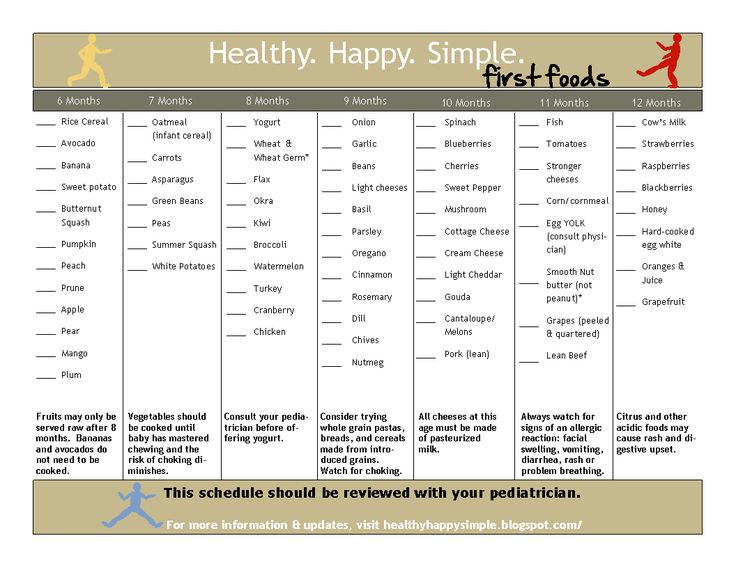 nine0005
nine0005
Table of contents:
Rice in the form of porridge can be introduced into complementary foods for a child from 4 months of age. However, it is necessary to remember the WHO recommendation to introduce complementary foods at the age of 6 months.
The second step in starting complementary foods is to identify the first type of complementary food and the first product (see here). Usually mothers have a choice between cereals and vegetables, if there is a lack of weight, then, most likely, cereals are introduced into the baby's diet. But buckwheat and rice are considered the first complementary foods. Most often, buckwheat is chosen as the first porridge, since the child's stool most likely will not change. But rice porridge strengthens, it is ideal as a therapeutic diet for diarrhea. nine0005
But it should not be discarded and it can be introduced as the first complementary food, as it is easily digested, coats the stomach, helps to remove toxins from the body, and is often recommended for unstable stools and frequent spitting up. It is also necessary to note the nutritional value of rice, with its low calorie content, which is useful for overweight. Rice also helps the body meet the need for complex carbohydrates, which are then used to build muscle mass and feel full for a long time. nine0005
It is also necessary to note the nutritional value of rice, with its low calorie content, which is useful for overweight. Rice also helps the body meet the need for complex carbohydrates, which are then used to build muscle mass and feel full for a long time. nine0005
Rice is introduced into complementary foods like any new product, it is necessary to withstand the first 4-7 days to monitor the reaction of the child's body to a new product. Usually, butter is introduced along with porridge, so if a child is about 7 months old and porridge is introduced, then butter must also be introduced, also as a new product. With an undesirable reaction of the child's body in the form of worsening stools, rashes, etc. consult a doctor and stop giving rice.
How to select and store rice
It is best to choose local varieties of rice as they travel less from seller to buyer. Our Krasnodar rice is ideal for baby food. Moreover, there is brown rice of Russian production, but you need to look for it.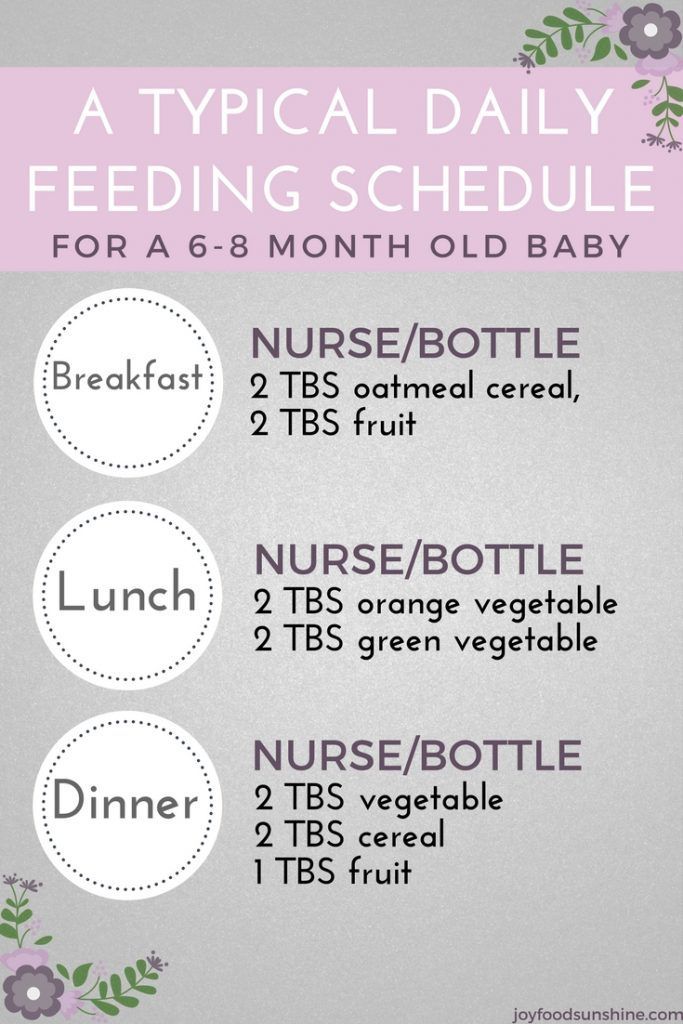 It will be difficult to choose rice, since there are more than 150 types, and it also differs in the way it is processed: polished, unpolished, steamed. nine0005
It will be difficult to choose rice, since there are more than 150 types, and it also differs in the way it is processed: polished, unpolished, steamed. nine0005
Therefore, mothers usually use rice, which the whole family eats for a long time. You can, of course, buy brown rice for your beloved baby, but this is decided individually with the pediatrician and at the family council.
When choosing rice, you should pay attention to the appearance of the cereal, which should be the same size throughout the package. If it is long-grain rice, then round-grain rice should not be found in the package. It is also worth checking for the presence of larvae, insects, checking the GOST sign and making sure that the rice does not smell of anything nasty. nine0005
Whole grains can be stored for 12 to 18 months in a cool, dry, dark place. If the temperature becomes extremely warm in the house, you can store the grains in the refrigerator. However, do not forget to look at the expiration date on the package.
Cooked rice is stored for no more than three days, for a child it is worth preparing a new porridge every time.
Ground whole grains such as rice flour should be stored in an airtight container in the refrigerator. Flour can be stored in a cool, dry place, but should be checked frequently. nine0005
When the grain is ground, the natural oils found in the rice can become rancid if left unrefrigerated. When buying any type of ground whole grain, it's best to buy a smaller amount to ensure it's used quickly and completely before it goes rancid.
By the way, brown rice should be stored in the refrigerator, and preferably in the freezer. If such rice is stored in the kitchen at above zero temperatures, then the oils begin to oxidize, which makes brown rice harmful. nine0131
Freezing rice or rice porridge
Freezing rice porridge does not behave very well, namely it becomes too soft and tasteless, therefore, it is best to freeze multi-ingredient dishes where there is very little rice porridge. Boiled rice is better than frozen rice porridge. Here's how food behaves after freezing.
Boiled rice is better than frozen rice porridge. Here's how food behaves after freezing.
Complementary food preparation: Rice
You can use a rice cooker, slow cooker, steamer and just a pot of water to cook rice porridge. Usually, rice in its pure form is not very suitable as the first complementary food, because after cooking it, whipping it into a homogeneous mass with a blender and other devices turns out badly, only a plastic grater will help, but it will take a lot of time. Therefore, rice must be prepared for the preparation of baby food. You need to pass it several times through a regular cereal mill, which is not difficult to buy in any store. Someday I will write a review of two mills that I have at home, one Soviet, the other modern. It turns out ordinary rice flour, from which it is easiest to cook children's rice porridge. nine0005
Approximately ¼ cup of rice flour uses 1-2 cups of water, depending on the final consistency and the child's preferences. Next, rice flour is poured into boiled water, everything is whipped with a whisk to get rid of lumps. Then everything is cooked over low heat until cooked, see the recipe here.
Next, rice flour is poured into boiled water, everything is whipped with a whisk to get rid of lumps. Then everything is cooked over low heat until cooked, see the recipe here.
I think everyone knows how to cook whole grain white rice, but remember, wash in several waters, you can soak for 1 hour, simmer for the first time, stirring until the rice is ready. nine0005
There is another original way to cook rice, but it is worth trying to understand whether it suits you or not.
Wash rice, boil water, add rice, cook at a boil for 1 minute, then turn off the heat, close the lid and leave to cool or reach for 5-10 minutes, until cooked. You will get fluffy rice.
Brown rice cooks a little differently because it is more firm. It is best to soak brown rice overnight in cold water, then wash it thoroughly in new water in the morning, pour new cold water over it. Boil for about 10 minutes, then rinse again with cold water, pour again and cook for 15 minutes. And then you need the rice to reach, so we remove it from the fire and wrap it in a blanket. nine0005
nine0005
We would like to remind you that children should not be introduced to sugar and salt until they are one year old.
The difference between brown and white rice
The difference between brown and white rice is not only in color. A whole grain of rice has several layers. Only the topmost layer, the husk, is removed to make what we call brown rice. This process is the least damaging to the nutritional value of the rice and avoids the unnecessary loss of nutrients that occurs with further processing of the grain. nine0005
If brown rice is further milled to remove the bran and most of the germ layer, the result will be white rice, rice that has lost more nutrients.
However, the rice is still unpolished and is polished to make the white rice we are used to seeing. Polishing removes the aleurone layer of the grains, filled with essential fats. Because these fats are highly susceptible to oxidation when exposed to air, this layer is removed through a refining process to extend the shelf life of the product.



